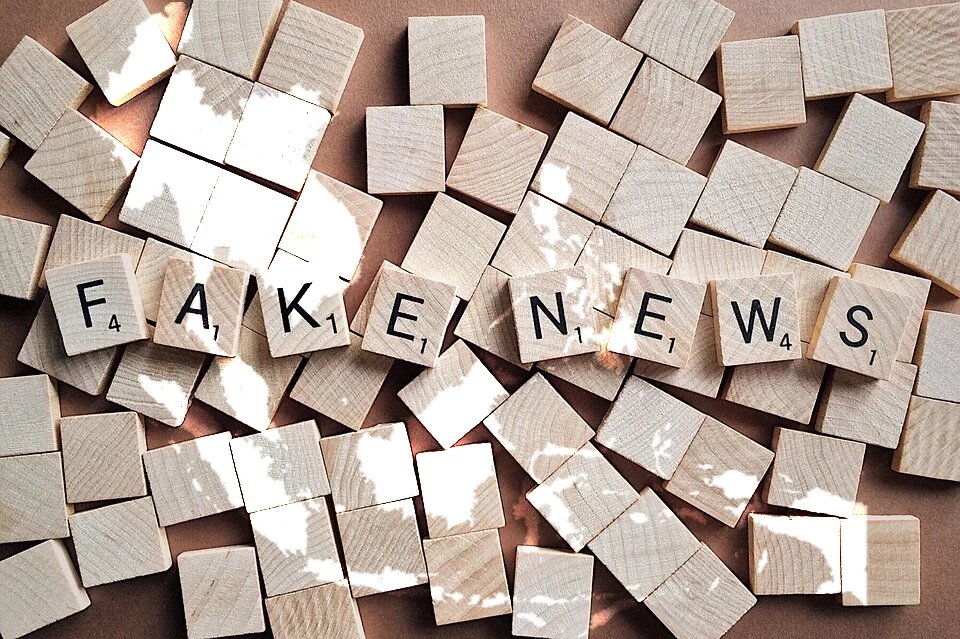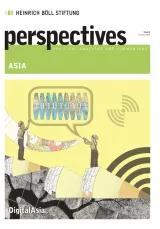
(First of two parts)
Journalists sued for espionage in Cambodia, and for using drones or supposedly violating the official secrets act in Myanmar. News outlets faced with financial penalties steep enough to cause them to go under, as it did in Cambodia. Media organizations in the Philippines repeatedly described as ‘fake news’ outlets by government officials chafing at critical reporting.
These are the tactics that Southeast Asia’s governments have been using of late to chip away at the space where media operates, and silence or discourage journalists from asking questions and challenging state narratives.
As Nop Vy, media director of the Cambodian Center for Independent Media (CCIM), said: “If freedom of media would not be protected, that means that democracy would also die someday.”
But while many of these methods of media suppression may be familiar, their impact is being made much more toxic by the unique confluence of factors playing out in parts of Southeast Asia today: online and social-media spaces that are in bad need of norm-setting, deep political polarization, and the rise of elected leaders who are popular, populist and/or authoritarian, or some combination of these.
This may well be a lethal mix for the region, adding a potent ingredient in the touchy political environments of Cambodia, where the ruling party is bent on quelling dissent ahead of the July 2018 general election, or in Myanmar, where the conflict in its northern Rakhine state has put the government on the defensive.
Even the Philippines is seeing challenges to democratic norms that supposedly have deeper roots there after its 1986 ‘People Power’ revolution. It is also shaping up to be laboratory for studying the impact that the noise, manipulation and ‘me culture’ in social-media platforms, specifically Facebook, have on public discussion and engagement, political space – and on the behavior and credibility of online media outlets themselves.
That presidents and prime ministers try to close in on the media is not new, and will continue. But the type of interactions through social and online media platforms – and the ease with which they are used as factories spreading disinformation, threats of harm and dangerous speech – is adding a messy layer to the spaces where news, media and discussion intersect.
These pose a threat to media freedom and media’s space in democratic societies and societies in transition, as well as freedom of expression, by muddling public spaces with orchestrated disinformation.
These, in turn, can sow the seeds of a dangerous, dismissive mistrust of the media as a necessary element of a functioning societal system.
While Filipinos, for instance, still value a free media, “what worries me more are attempts to undermine the credibility of the media and erode public trust in them”, says Yvonne Chua, a journalism professor at the University of the Philippines and founding trustee of the ‘Vera Files’ online news site, said in an email interview.
THE PHILIPPINES AS LABORATORY
In the Philippines, the political atmosphere over the last two years has seen disinformation, fake news, paid messaging and troll activity occupy social media, freely mixing with news and public discussion and injecting never-seen-before levels of hate and threats, often around populist support for or against President Rodrigo Duterte and his administration.
In this online world, it has not been unusual for professional media outlets, even those with a track record of decades behind them and doing regular news coverage, to become targets of repeated cycles of allegations of bias, malice, inaccuracy, being used by the President’s rivals – or of spreading fake news.
“No technology has been weaponized at such an unprecedented global scale as social media,” said the report ‘Architects of Networked Disinformation: Behind the Scenes of Troll Account and Fake News Production in the Philippines’, released in February. “Diverse research approaches now attempt to decipher how laptop screens and smartphones around the world are used to manipulate public debate, hijack mainstream media agenda, and influence political outcomes,” said the report, authored by Jonathan Corpus Ong of the University of Massachussetts, in the United States and Jason Vincent Cabañes of the University of Leeds in Britain.
The study unearths what it says has become a well-entrenched and organized industry, involving politicians, their handlers or any groups wanting to have any kind of campaign, well-respected public relations people and social media influencers willing to work with any client, down to individuals who have no problem working as trolls.
“In the Philippines, the names on the lips of political pundits and the mainstream press are those of the social media influencers who command ‘troll armies’ credited with sweeping Rodrigo Duterte into unforeseen election victory in 2016,” the report’s executive summary said. “Under Duterte’s presidency, ‘trolls’ or ‘Dutertards’ as his fanatic followers have been dubbed, are seen to have debased political discourse and silenced dissidents in their vociferous sharing of fake news and amplification of hate speech.”
The Philippines is also included among the 28 countries where social media manipulation has been tracked over the period 2010 to 2017 in a study entitled ‘Troops, Trolls and Troublemakers: A Global Inventory of Organized Social Media Manipulation’.
There is evidence of pro-government comments as well as harassment, trolling or “negative interactions with users” through automated fake accounts, said the working paper produced under the Computational Propaganda Research Project of the University of Oxford in Britain and released in December 2017.
It has a heat map of the world showing “density of cyber troops” – the darker shades of red are for the countries that have more kinds of organizations and actors using organized social media campaigns “to battle for public opinion”. The Philippines is ranked 4, with an orange shade. That is the same level as Russia, and just one notch below the United States – two countries that have figured heavily in social media battles. The paper defines cybertroops as “government, military or political party teams committed to manipulating public opinion over social media”.
Indeed, overt censorship is starting to look outdated when the digital-era tactic is not to restrict, but to overwhelm to shape or twist public sentiment.
In a way, it has become harder to protect and defend media space given the many fronts in the current information sphere, agrees Cecilia Lazaro, a multi-awarded broadcast journalist and host who pioneered incisive documentaries in Philippine television. “You have to counter the disinformation on a large scale – every single socmed (social media) entry is equivalent to one traditional media entity with audiences that equal, if not surpass, traditional media outlet numbers.”
Equally risky is the potential the current scenario has for warping the value, and meaning, attached to freedom of expression and speech. “The freedom to express has been mistakenly identified as the freedom to say anything without benefit of being accurate and accountable for what is being said,” Lazaro said in an email interview.
If public trust in the media as an indispensable institution is eroded, it becomes easier for governments to invoke problems such as fake news as reason to pass new laws that add to the toolkit for media control already in place. Likewise, media may also find a public less willing to defend their space in the body politic.
WANTED: MORE STUDIES
But while Southeast Asia is a major market in social and online media usage, it lags behind as the subject of research, especially from within the region itself, into digital behavior, news consumption through social media, as well as these platforms’ impact on political interaction, at a time they are needed most.
Most global reports with statistics on digital news or the use of online space focus on North America and Europe. Media freedom indices, mostly done by Western rights groups, may no longer be enough too, as with reports that look at internet freedom mainly from the lens of connectivity and access.
Yet these information are tools needed to make social media space more transparent, instead of the ‘free for all’ feel it often seems to have. Social media are not news or the media, and fake news is not even news, but social media cannot be disentangled from Southeast Asia’s information sphere.
Consider these figures. In ‘Digital News Report 2017’, commissioned by the Reuters Institute for the Study of Journalism, data on Malaysia and Singapore show that more than 60% of respondents (67% in Malaysia, 61% in Singapore) go to social media for news. This is followed by television, with print not far behind. How about trust? Only 29% of Malaysian respondents have trust in news overall and 32% said they trust the news they use. The corresponding percentages in Singapore, where the media are controlled, are 42% and 46%.
Of Southeast Asia’s 644 million people, 53% are Internet users, according to the ‘Digital in 2017’ report produced by the US-based We Are Social campaigns and marketing agency and Hootsuite social media management platform. Likewise, it said 305.9 million people were “active social media users”, putting the region’s social media penetration rate at 47%.
As it is, these are far from the best times for media, especially independent ones, whether they are digital-native publishers or established outlets that have online news outlets (called ‘legacy media organizations’).
CAMBODIA
In Cambodia, a February report by the Cambodian Center for Independent Media (CCIM) said that 83% of local journalists believe that media freedom is on the decline in their country. This comes on the heels of a February report by Reporters Without Borders, saying that Prime Minister Hun Sen’s clampdown on independent media has led to “the tragic decline in the freedom to inform in Cambodia, where the independent media are now in ruins”.
In September 2017, the print edition of the English-language ‘Cambodia Daily’ closed down after it could not pay 6.3 million dollars in back taxes. The paper’s website and Facebook page continue.
In October, two former ‘Cambodia Daily’ reporters were charged with “inciting crime” in connection with interviews around a past municipal election. In November, two former Radio Free Asia reporters, Oun Chhin and Yeang Sothearin, were arrested under a law that criminalizes passing on national-security information to a foreign state.
As of end-August 2017, 32 radio stations, from RFA’s Phnom Penh bureau to the Women’s Media Centre of Cambodia, have been shut down. In many cases, the reasons for closure were alleged violations of their government-issued licenses.
The information ministry has rejected the press card applications of journalists from the closed outlets, the Reporters Without Borders report said.
“Our journalists may be feeling fear or unsafe with their works,” conceded CCIM’s Nop Vy. The closure of independent media and the government’s discrimination in issuing press cards are the top two threats in Cambodia’s media at present, he says. The third, he adds, is the use of the penal code to intimidate social media activists.
The media that are still operating are on edge in the run-up to the July election. Some journalists did not want to be quoted about media freedom for this article, or did not want to take the risk of speaking over the phone or replying on email.
MYANMAR
Over in Myanmar, two Reuters journalists who were working on a story on the military’s crackdown on the Rohingya Muslim minority in Rakhine state, were arrested in December. Officials said they were charged under the 1923 Official Secrets Act not for their reporting, but for the illegal possession of confidential state documents. The British colonial-era law has a maximum jail sentence of 14 years.
The journalists, Wa Lone and Kyaw Soe Oo, have said they had dinner with police officials who had invited them and handed them some documents. At the Feb 21 court hearing, one police witness agreed that the information in the documents the two had when they were arrested had already been published in newspaper reports, a Reuters news report said.
On Feb 8, Reuters news agency released the story the two had been working on around the killing of 10 Rohingya Muslim men who were buried in a mass grave in Rakhine. “I should be in the newsroom. I am a journalist. I never did anything wrong. So, I am trying to be strong,” Wa Lone was quoted as saying during a break in the Feb 21 hearing.
From 2016 to February 2018, 38 journalists doing coverage in Myanmar have been harassed, physically attacked, or charged with lawsuits under reasons ranging from visa violations to defamation to Burma’s 1923 Official Secrets Act, the telecommunications or the printing and publishing law, according to data compiled by the Bangkok-based Southeast Asian Press Alliance.
While some challenges to media above are familiar, they acquire very jagged edges in the fired-up, quick-paced online spaces that up until five years ago were almost universally hailed as a democratic avenue that allows audiences to bypass the gatekeepers in news media.
LOOKS LIKE NEWS, BUT ISN’T
Fast forward to today – when online space has also become an arena for content manipulation and distribution of disinformation, including by sites that package themselves in the news format, but do not use the practices, systems or ethics of news production.
Reporters Without Borders cites as an example Cambodia’s Fresh News, which it said started as a pro-government Facebook page then became a government-aligned website that has become “a major presence in the digital news terrain” with more than 2 million visitors.
Fresh News posted photos purportedly showing one of the detained RFA reporters, Oun Chhin, filming and taking part in pornographic videos, which the site said was leaked by police after a raid on the journalist’s studio.
In Myanmar’s volatile environment, internet and social media have been afire with material relating to the Rakhine crisis, including patently fabricated information or images.
The environment has deteriorated to the point that journalists like the Associated Press’ Esther Htusan, who was part of the US news agency’s team that won a Pulitzer Prize in 2016 for a series on forced labor in Southeast Asia’s fishing industry, had to leave the country after online threats were made against her and unidentified men followed her to her Yangon home.

